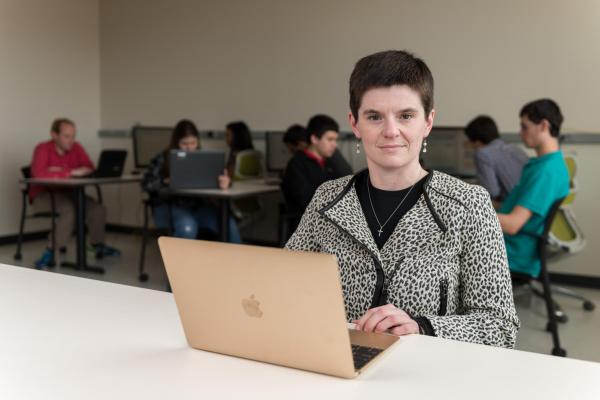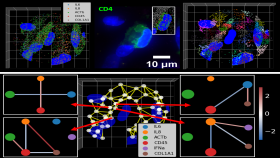Like a diligent team of detectives, the researchers in Cassie Mitchell’s lab are busily gathering evidence to implicate what they believe is the chief suspect in Alzheimer’s disease, and now they have support from the Alzheimer’s Association to build their case, in the form of a three-year, $150,000 grant.
It’s the latest breakthrough in a saga that began several years ago in the Pathology Dynamics Lab that Mitchell runs as an assistant professor in the Wallace H. Coulter Department of Biomedical Engineering at Georgia Tech and Emory University.
“We work in the realm of predictive medicine, in which we use data to try and predict what we call the three big C’s – causes, cures, and care,” says Mitchell, a researcher in the Petit Institute for Bioengineering and Bioscience at Georgia Tech. “We wanted to research Alzheimer’s disease, so I asked my students to go into the published literature and examine the most prevalent data that was out there.”
She was shocked by what they ultimately came back with. Their findings showed a minor correlation between amyloid-beta and Alzheimer’s disease. Mitchell says she nearly panicked. “I thought we were going to have so many eggs thrown at us for going against the dogma in the field.”
So they followed that up with further data analysis of the cumulative evidence, which showed that plaque from amyloid-beta protein may be an accomplice, but the chief offender is another bad protein, phosphorylated tau (p-tau). Mitchell’s team published their study, funded by the National Institutes of Health (NIH), last November in the Journal of Alzheimer’s Disease.
“In that study we found out, with a more advanced mouse model this time, that amyloid-beta plaque has only a minimal impact in cognitive decline – it’s more like a side effect of the disease,” Mitchell says. “By the time the plaque forms, cognitive decline is already happening, so targeting the plaque happens too late in the disease process. In that same paper, we were able to show that p-tau, on the other hand, was more strongly tied to cognitive decline. So, long story short, you’re probably not going to have a solo target in Alzheimer’s.”
And that’s what led Mitchell to submitting an application with the Alzheimer’s Association International Research Grant Program for her research, entitled, “Quilting Disparate Data Patches to Elucidate Alzheimer’s Disease.”
“I figured, we’re data scientists, why don’t we just take in all of the data? Instead of just going after one target, we should rank all of the potential contributing factors and their different interactions,” Mitchell says.
The challenge is, rather than trying to mine data from mere hundreds or a few thousand Alzheimer’s research papers, this time the Mitchell team is sifting through a much bigger data set – the more than 130,000 Alzheimer’s papers in the National Library of Medicine’s PubMed database. Her lab is creating algorithms to sift through and aggregate the data, “like putting together a puzzle,” Mitchell says.
“This award is testament to the innovation and creativity in the project – the best of the best Alzheimer’s researchers apply for these grants, so we’re honored,” she adds. “The hope is that there will be spinoff projects and NIH R01 grants to follow. But there is a lot of work to be done. We can’t just throw standard data mining techniques at this. It’s going to take some ingenuity.”
Media Contact
Jerry Grillo
Communications Officer II
Parker H. Petit Institute for
Bioengineering and Bioscience
Keywords
Latest BME News
Commercialization program in Coulter BME announces project teams who will receive support to get their research to market.
Courses in the Wallace H. Coulter Department of Biomedical Engineering are being reformatted to incorporate AI and machine learning so students are prepared for a data-driven biotech sector.
Influenced by her mother's journey in engineering, Sriya Surapaneni hopes to inspire other young women in the field.
Coulter BME Professor Earns Tenure, Eyes Future of Innovation in Health and Medicine
The grant will fund the development of cutting-edge technology that could detect colorectal cancer through a simple breath test
The surgical support device landed Coulter BME its 4th consecutive win for the College of Engineering competition.
New research from Georgia Tech helps doctors predict how therapies will interact with a child's immune system, potentially improving outcomes and reducing risks.








